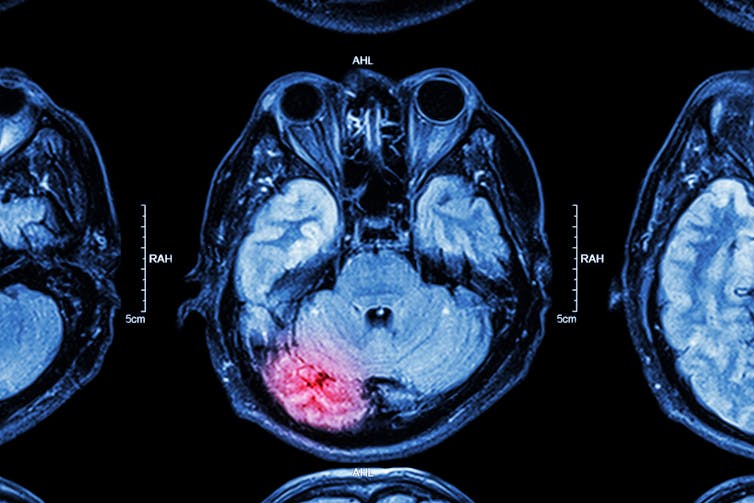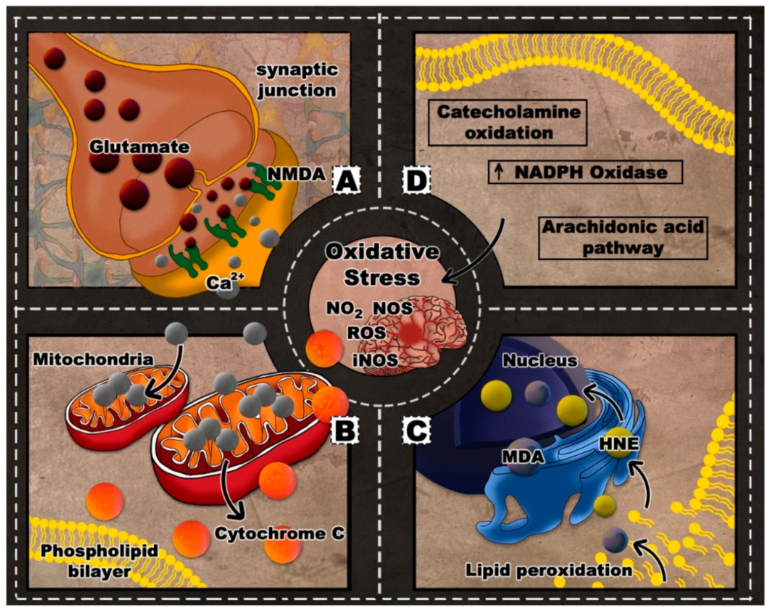Traumatic brain injury is a leading cause of death and disability in the world. Blunt force trauma to the brain, often from a bad fall or traffic accident, accounts for the deaths of over 61,000 Americans each year. Over 80,000 will develop some long-term disability.
While much of the physical brain damage occurs instantly – called the primary stage of injury – additional brain damage can result from the destructive chemical processes that arise in the body minutes to days to weeks following initial impact. Unlike the primary stage of injury, this secondary stage could potentially be prevented by targeting the molecules driving damage.
I am a materials science engineer, and my colleagues and I are working to design treatments to neutralize the harm of secondary traumatic brain injury and reduce neurodegeneration. We designed a new material that could target and neutralize brain-damaging molecules in mice, improving their cognitive recovery and offering a potential new treatment for people.
Biochemical fallout
The primary stage of traumatic brain injury can severely damage and even destroy the blood-brain barrier – an interface protecting the brain by limiting what can enter it.
Disruption of this barrier triggers damaged neurons or the immune system to release certain chemicals that result in destructive biochemical processes. One process called excitotoxicity occurs when too many calcium ions are allowed into neurons, activating enzymes that fragment DNA and damage cells, causing death. Another process, neuroinflammation, results from the activation of cells called microglia that can trigger inflammation in damaged areas of the brain.

Traumatic brain injury can result in long-term damage.
stockdevil/iStock via Getty Images Plus
These secondary phase processes also produce harmful molecules called reactive oxygen species. These molecules, which include free radicals, chemically modify and deform essential proteins in cells, rendering them useless. They can also break DNA strands, leading to potentially damaging genetic mutations.
If left unchecked, harm from this oxidative stress can have devastating consequences for long-term health and neurocognitive recovery. Researchers have linked the biochemical changes and byproducts resulting from this cascade of damaging molecules to the development of long-term neurological disorders such as Alzheimer’s, Parkinson’s and ALS, among others.
However, compounds called antioxidants can target this oxidative stress and improve long-term neurocognitive recovery by chemically interacting with reactive oxygen species in a way that can neutralize their damaging properties.
Finding the ideal antioxidant
My team and I studied whether an antioxidant called a thiol group could help treat traumatic brain injury.
Thiol groups are chemical compounds that contain a sulfur atom bound to a hydrogen atom. Sulfur atoms are much larger than hydrogen atoms,…



